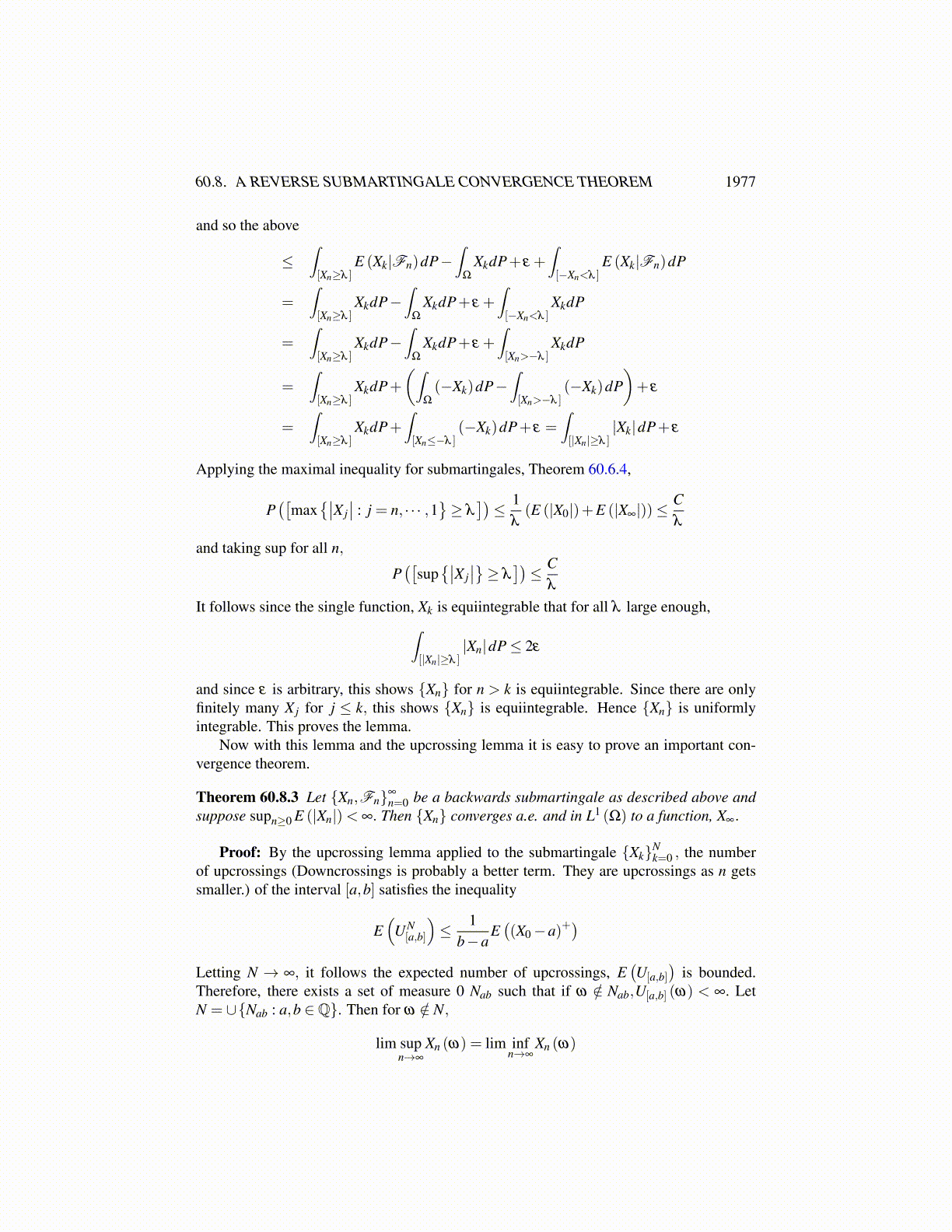
60.7. THE SUBMARTINGALE CONVERGENCE THEOREM 1977
and also for these ω,
∑n
∑k(Xn (ω) ,ek)
2H < ∞.
It follows from the estimate 60.7.18 that for ω not on a suitable set of measure zero, S (ω)defined by 60.7.17,
S (ω)≡∞
∑k=1
Yk (ω)ek
makes sense. Thus for these ω
S (ω) = ∑l(S (ω) ,el)el = ∑
lYl (ω)el ≡∑
l∑n(Xn (ω) ,el)H el
= ∑n
∑l(Xn (ω) ,el)el = ∑
nXn (ω) .
This proves the theorem.Now with this theorem, here is a strong law of large numbers.
Theorem 60.7.5 Suppose {Xk} are independent random variables and E (|Xk|) < ∞ foreach k and E (Xk) = mk. Suppose also
∞
∑j=1
1j2 E
(∣∣X j−m j∣∣2)< ∞. (60.7.19)
Then
limn→∞
1n
n
∑j=1
(X j−m j) = 0 a.e.
Proof: Consider the sum∞
∑j=1
X j−m j
j.
This sum converges a.e. because of 60.7.19 and Theorem 60.7.4 applied to the randomvectors
{X j−m j
j
}. Therefore, from Lemma 59.7.4 it follows that for a.e. ω,
limn→∞
1n
n
∑j=1
(X j (ω)−m j) = 0
This proves the theorem.The next corollary is often called the strong law of large numbers. It follows immedi-
ately from the above theorem.
Corollary 60.7.6 Suppose{
X j}∞
j=1 are independent random vectors, λ Xi = λ X j for alli, j having mean m and variance equal to
σ2 ≡
∫Ω
∣∣X j−m∣∣2 dP < ∞.
Then for a.e. ω ∈Ω
limn→∞
1n
n
∑j=1
X j (ω) = m